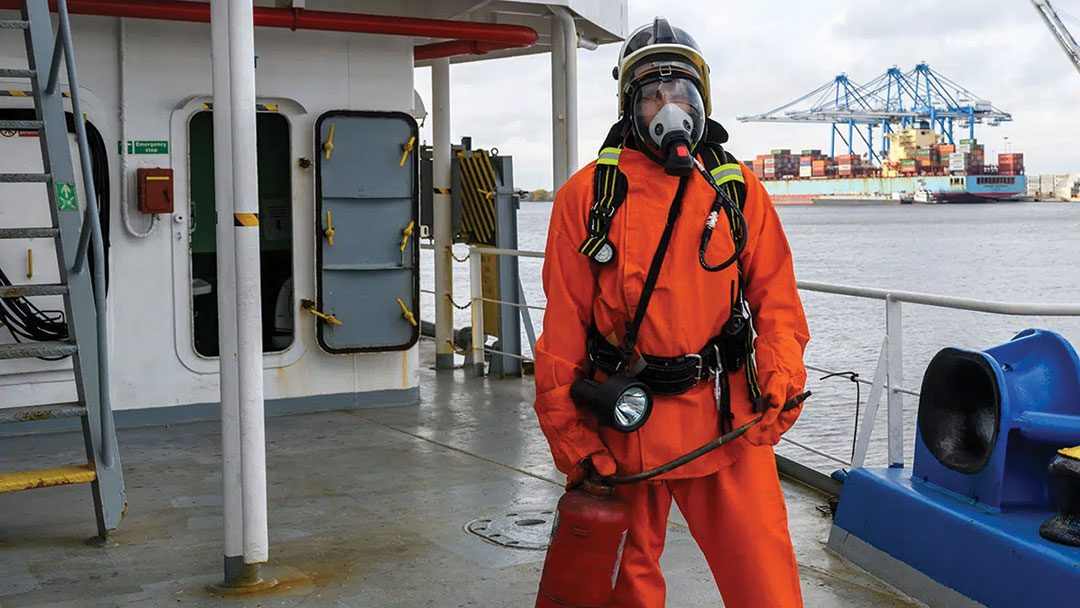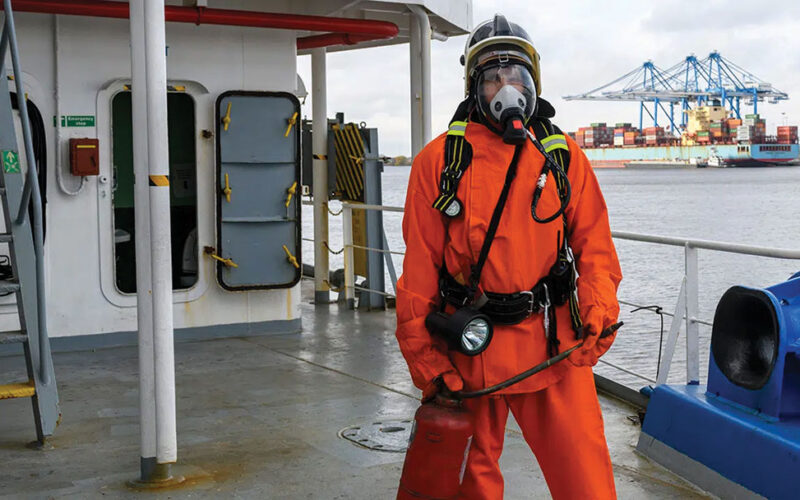
A new safety report from DNV and Lloyd’s List Intelligence highlights the need to cultivate improved safety standards in the maritime industry against the backdrop of fundamental industrial shifts such as decarbonization and digitalization.
The latest safety report by DNV and Lloyd’s List Intelligence – Maritime Safety Trends 2012–2022: Advancing a Culture of Safety in a Changing Industry Landscape – provides a comprehensive overview of the latest safety trends in the maritime industry.
With the industry changing rapidly as it strives to reach ambitious decarbonization goals, new technologies are driving the move toward the implementation of equally ambitious strategies to increase the level of safety for both mariners and the vessels they sail aboard.
Safety statistics for the report were provided by Lloyd’s List Intelligence and reveal some negative trends. The total number of safety incidents involving vessels larger than 100 gross tons reached 2,615 in 2022, representing an annual increase of 9 percent.
Safety incidents also grew by 7 percent in 2021, following mainly negative growth in the preceding decade. A large part of these increases can be attributable to a post-pandemic increase in seaborne trade.
 However, this does not tell the full story and the data suggest some more fundamental issues at work. Analysis of the number of incidents for the period 2012-2022 shows a mixed picture. Incidents involving vessels in collision showed a positive trend until economies reopened after lockdown. The number of onboard fires appears to be rising, but the number of piracy incidents has actually fallen.
However, this does not tell the full story and the data suggest some more fundamental issues at work. Analysis of the number of incidents for the period 2012-2022 shows a mixed picture. Incidents involving vessels in collision showed a positive trend until economies reopened after lockdown. The number of onboard fires appears to be rising, but the number of piracy incidents has actually fallen.
Reports of wrecks and strandings have also fallen, as did the number of vessels damaged by conflict, until 2022. Shipping has suffered during the ongoing war in Ukraine with more ships lost last year than in the rest of the decade combined.
Machine damage or failure has been the main driver of this surge in safety incidents, growing by 24 percent in 2021 and 13 percent in 2022. A number of different types of machine deficiencies, such as lost rudder or fouled propellor, fall under this category, which accounted for 55 percent of safety incidents in 2021 and 57 percent of incidents in 2022.
Digging into these numbers leads to more questions than answers. It is not known what proportion of these machinery damage or failure incidents occurred at port or in open waters. Questions also need to be asked about whether incidents were handled effectively by crew members or whether the incidents resulted in collision, allision, grounding, or sinking.
It is also possible that an improved attitude toward incident reporting drove these numbers up. If true, this would be a positive development, pointing to improvements in the safety culture of ship organizations, something that the DNV report strongly advocates.
Machine damage or failure is expected to continue to be the biggest driver of safety incidents in the future, with technological change a decisive factor in this. As discussed in depth throughout the report, the maritime industry’s transition to new fuels and engine types will present new safety challenges to ship operators and crew members.
Fuels like ammonia and methanol are unfamiliar to maritime workers and contain their own particular safety hazards, while the engines that they fuel will require additional knowledge and skillsets that many mariners do not currently possess.
It is crucial then that safety considerations lie at the heart of the transition to these new technologies, as well as to digital technologies that are rapidly replacing traditional shipboard operating systems. That will require new training programs that are crafted by the realistic considerations of those who will interact most with new technologies.
Against the backdrop of rapid change in the maritime industry, safety guidelines and regulations from the International Maritime Organization (IMO) have needed to evolve to remain in step with new fuels and technologies.
However, this is no easy task. Regulations traditionally designed for ships and systems of today can become outdated and less relevant as new fuels and operating systems become more prevalent.
Older regulations can even hinder the application of new technologies, slowing down further development that, in turn, can slow down decarbonization efforts.
“Although the current international regulatory safety framework is always evolving, it is largely based on a set of standards that were written at a time when technologies were quite fixed and that assumed large levels of human intervention,” said Kathrine Ilje Nerland, senior principal engineer and a safety regulation expert at DNV.
“However, with the industry shifting towards increased automation, alternative fuels and more advanced navigation and communication equipment, there is a need to design new regulations that are modern and more in step with these technological shifts,” she said.
These fundamental concerns have prompted the IMO to shift the ways in which they approach safety regulations.
Most significantly, this has seen the organization moving from prescriptive regulations towards goal-based requirements. Goal-based safety requirements are fundamentally broader and more flexible than prescriptive regulations and allow the IMO to define fundamental aspects of safety criteria that need to be met to ensure safe shipping.
“A key benefit of goal-based requirements is that IMO regulations are given the flexibility to accept new technologies and novel designs by meeting broad safety requirements instead of specific design criteria,” said Nerland. That familiarity, she added, “puts DNV in an excellent position to add value to safety regulations by providing assurance that new systems and technologies are safe and compliant with the goal-based IMO requirements.”
Although, on a broader level, the IMO is shifting towards a goal-based approach when dealing with safety regulations, efforts are still being made by the organization to tailor its existing suite of regulations.
The International Convention for the Safety of Life at Sea (SOLAS) and associated Codes is a comprehensive document that covers all areas of maritime safety with several amendments set to take effect in 2024.
Those new amendments include new requirements for ships carrying industrial (non-crew) personnel; the modernization of the requirements for the worldwide system for communication of emergency information (GMDSS); and updates to the requirements for ships using LNG as fuel.
“Highlights of the work in progress towards 2026 and beyond include the development of provisions for autonomous ships and measures to improve the fire safety of ro-ro passenger ships,” said Nerland. “A regulatory framework for ships using alternative fuels like methanol, LPG, hydrogen, low flashpoint oil fuels, and ammonia, and for fuel cells being installed onboard, is also being developed and is expected to come into force at various stages over the next decade, helping to facilitate the advancement of these fuels and contribute towards safe decarbonization.”
Effectively steering that shift requires a change in attitude, both from those in positions of leadership, and workers involved in day-to-day operations, as well as cross-industry collaboration.
Doing that well, the report stated, “will enable the whole industry to learn about specific challenges related to new fuels and technologies thus paving the way for a smoother decarbonization journey in the future.”
In particular, the report concluded by emphasizing the need for maritime companies to develop “a robust safety culture that places people at its core.”

